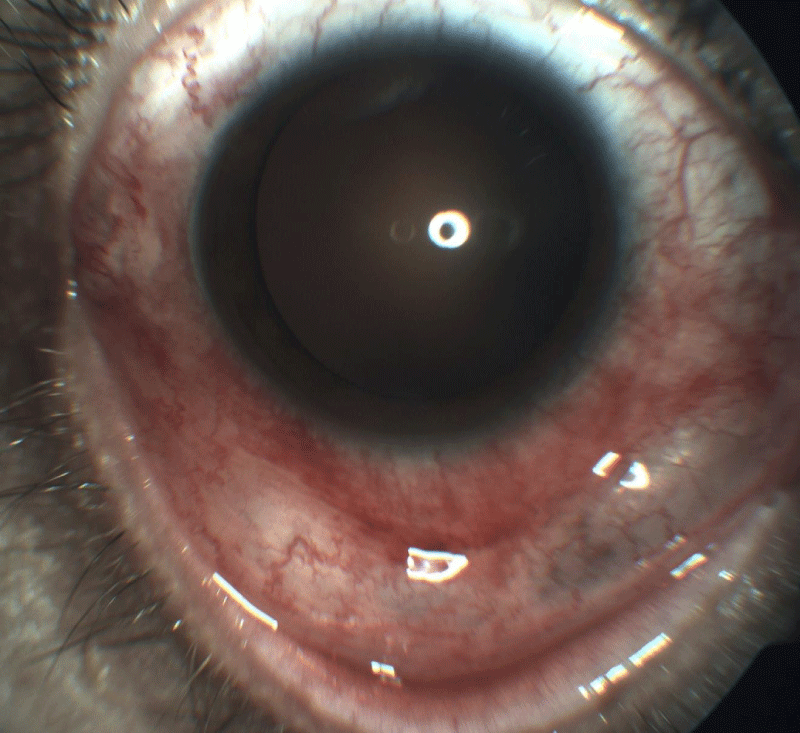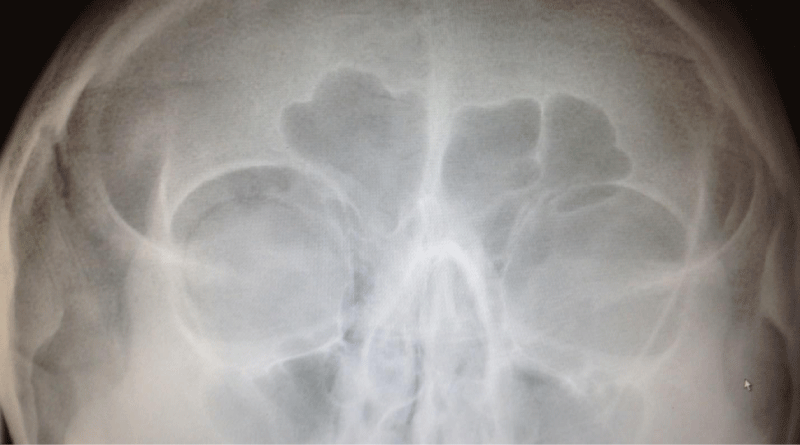Pneumatic Air Injury of the Eye?
Aine Ni Mhealoid*
Royal College of Surgeons Ireland, Ireland
*Address for Correspondence: Aine Ni Mhealoid, Royal College of Surgeons Ireland, 3 Tudor Grove,Ashbourne,Co. Meath, Ireland, Tel: 003-538-636-013-61; E-mail; [email protected]
Submitted: 28 September 2017; Approved: 21 October 2017; Published: 23 October 2017
Citation this article: Aine Ni Mhealoid. Pneumatic Air Injury of the Eye. Int J Ophthal Vision Res. 2017;1(2): 022-023.
Copyright: © 2017 Aine Ni Mhealoid. This is an open access article distributed under the Creative Commons Attribution License, which permits unrestricted use, distribution, and reproduction in any medium, provided the original work is properly cited
Download Fulltext PDF
Introduction
To date, there have been very few reported cases of orbital and/or subconjunctival emphysema from a compressed air injury. What makes this case even more unusual is the fact that no orbital fracture was identified. Traditionally, it was thought that the presence of subcutaneous emphysema was indicative of a fracture. This case shows that other mechanisms can lead to its presence.
Case Report
A 35-year-old mechanic was accidently hit in the right eye with rubber piping he was cutting, which, released compressed air at the time of injury. He presented complaining of pain and blurred vision in that eye.
On examination, his right visual acuity measured 6/24 (Snellen) unaided and pinholed to 6/12. His left visual acuity was 6/6. There was marked periorbital swelling and tenderness. External palpation of the right upper and lower eyelids revealed the presence of crepitus. Extraocular movements were full with no evidence of diplopia. Slit-lamp biomicroscopy was significant for a 4mm lateral bulbar conjunctival laceration with associated chemosis and 360-degree subconjunctival air bubbles (Figure 1). No scleral perforation was evident. Intraocular pressure measured 16mmHg and the cornea was clear. Cells were present in the anterior chamber and there was a very mild inferonasal posterior subcapsular cataract present. Fundoscopy revealed some superior perifoveal and inferior commotio retinae.
Orbital X ray showed nondependent air within and outlining the wall of the right globe with no air-fluid level in the sinuses and thus no evidence of an orbital, paranasal sinus or cranial fracture (Figure 2). The patient was given a tetanus booster and treated with intravenous ciprofloxacin (allergy to penicillin). Topically he was given dexamethasone and chloramphenicol drops.
4 weeks after the injury, his visual acuity had improved to 6/6 and the subconjunctival and subcutaneous emphysema had completely resolved. Residual right macular pigmentary changes remained.
Discussion
Orbital emphysema is a rare condition in the absence of orbital wall fracture or sinus disease [1,2]. Other causes include forceful nose blowing, post-surgical and pressure changes during air-travel [2].
A small number of cases of orbital emphysema following a conjunctival laceration in the absence of an orbital fracture have been reported in the literature. In 1986, Bigger, et al [3], described a case of subconjunctival emphysema as a result of upper eyelid eversion from a compressed air tube. It was believed that the high pressure led to the creation of microscopic conjunctival tears. Stroh et al [4] noted a case of a superior forniceal 8mm conjunctival laceration as a result of an air gun injury leading to migration of air into the subconjunctival, subcutaneous and retrobulbar spaces. Another case of orbital emphysema with commotio retinae has been described by Mathew et al. [5] Bilateral orbital emphysema and pneumocephalus has been described by Yuksel et al. [1] Orbital emphysema from compressed air injuries has also been reported in the absence of conjunctival lacerations [6-8].
Though our patient did not suffer any long-term sequelae after this accident, complications that can occur following high-pressure injury to the orbit include direct contusion of orbital contents, traumatic and compressive optic neuropathy, blowout fracture of the orbit, central retinal artery occlusion, tearing of the ophthalmic veins with fatal air embolism, retention of foreign bodies through the conjunctiva, glaucoma, uveitis and transient corneal exposure. [1,5,7,8].
Conclusion
Orbital emphysema can occur following trauma in the absence of an orbital wall fracture. Most patients have complete recovery within one month but should initially be monitored closely for signs of complications. Users of compressed hoses and air guns should be encouraged to wear protective eyewear.
- Yuksel M, Yuksel KZ, Ozdemir G, UgurT. Bilateral orbital emphysema and pneumocephalus as a result of accidental compressed air exposure. Emerg Radiol. 2007; 13: 195-198. https://goo.gl/VtcQN6
- Benharbit M, Karim A, Lazreq M, Mohcine Z. Emergency treatment of post-traumatic orbital emphysema: A case report. J Fr Ophthalmol. 2003; 26: 957-959. https://goo.gl/VBvZWY
- Biger Y, Abulafia C. Subconjunctival emphysema due to trauma by compressed air tube. Br J Ophthalmol. 1986; 70: 227-228. https://goo.gl/FnfCTZ
- Stroh EM, Finger PT. Traumatic transconjunctival orbital emphysema. Br J Ophthalmol. 1990; 74; 380-381. https://goo.gl/RjrRZo
- Mathew S, Vasu U, Francis F, Nazareth C. Transconjunctival orbital ephysema caused by compressed air injury: A case report. Indian J Ophthalmol. 2008; 56: 247-249. https://goo.gl/5eURCa
- Hitchings R, McGill JI. Compressed air injury of the eye. Br J Ophthalmol. 1970; 54: 634. https://goo.gl/Ce6a5x
- Shah N. Spontaneous subcutaneous orbital emphysema following forceful nose blowing: Treatment options. Indian J Ophthalmology. 2007; 55: 395. https://goo.gl/LoSC14
- Caeser R, Gajus M, Davies R. Compressed air injury of the orbit in the absence of external trauma. Eye. 2003; 17: 661-662. https://goo.gl/qjkGu2



Sign up for Article Alerts